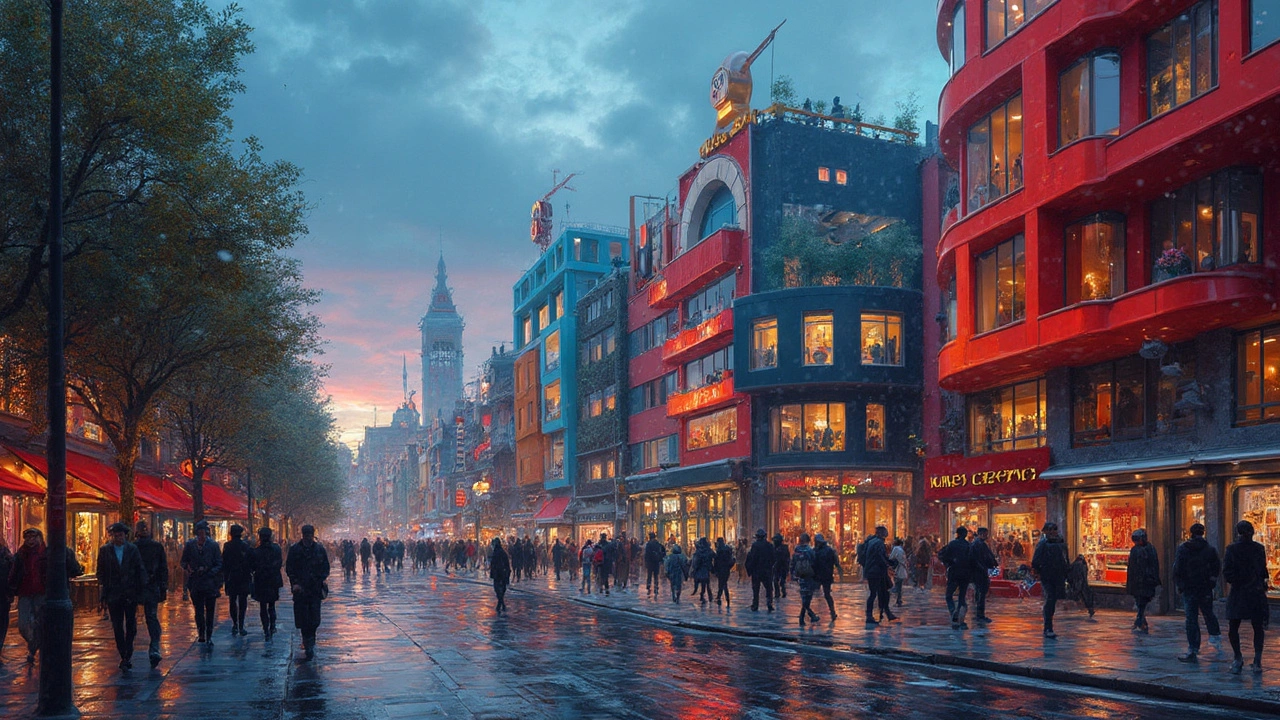Break down what makes postmodern architecture tick, from bold designs and playful details to real-world icons and what this all means for how we live and see our cities today.
Postmodern Design: Bold Moves in Architecture
Ever walked past a building that looked like it was playing with shapes or colors just for fun? That’s postmodern design showing up. It flips the serious tone of modernism and brings humor, history, and surprise into architecture.
What Makes Postmodern Design Different?
First off, postmodern architects love mixing styles. You might see a sleek glass tower with a classical column attached to it – that clash is on purpose. The idea is to remind us that buildings can tell stories, not just follow one rule.
Color is another big deal. While modernism stuck to neutral tones, postmodern design throws in bright reds, blues, or even patterned façades. It feels like a painting you can walk around.
Quotes and references are common too. A designer might copy a famous arch from ancient Rome and place it next to a funky, oversized billboard. The contrast makes us pause and think about why those elements sit together.
Spotting Postmodern Details Today
If you want to spot postmodern design in your city, start with three clues. Look for playful shapes – unexpected angles, irregular roofs, or a building that seems to change shape as you move around it. Next, check the materials: a mix of glass, brick, stone, and even neon lights often signals postmodernism.
Finally, pay attention to references. Does the façade mimic a historical style but in a new context? Is there irony, like a giant statue that looks serious but is placed on a whimsical base? Those are classic postmodern tricks.
Some famous examples help you train your eye. Think of Michael Graves’ Portland Building with its bright colors and oversized keystone, or the Piazza d'Italia in New Orleans, which mixes Italian classical details with bold pastel hues. Both show how postmodern design loves to joke while still delivering a strong visual impact.
When you see these elements, ask yourself: is the building trying to make me smile? Is it mixing old and new on purpose? If the answer is yes, you’re likely looking at postmodern work.
Understanding postmodern design also helps when choosing a home or office space. A postmodern interior might blend vintage furniture with modern lighting, creating a relaxed yet interesting vibe. It’s perfect if you want something that feels personal and not overly uniform.
In short, postmodern design breaks rules on purpose. It mixes styles, uses bright colors, and adds playful references to keep architecture lively. By spotting the shapes, material mixes, and historical nods, you can start recognizing this bold movement wherever you go.

